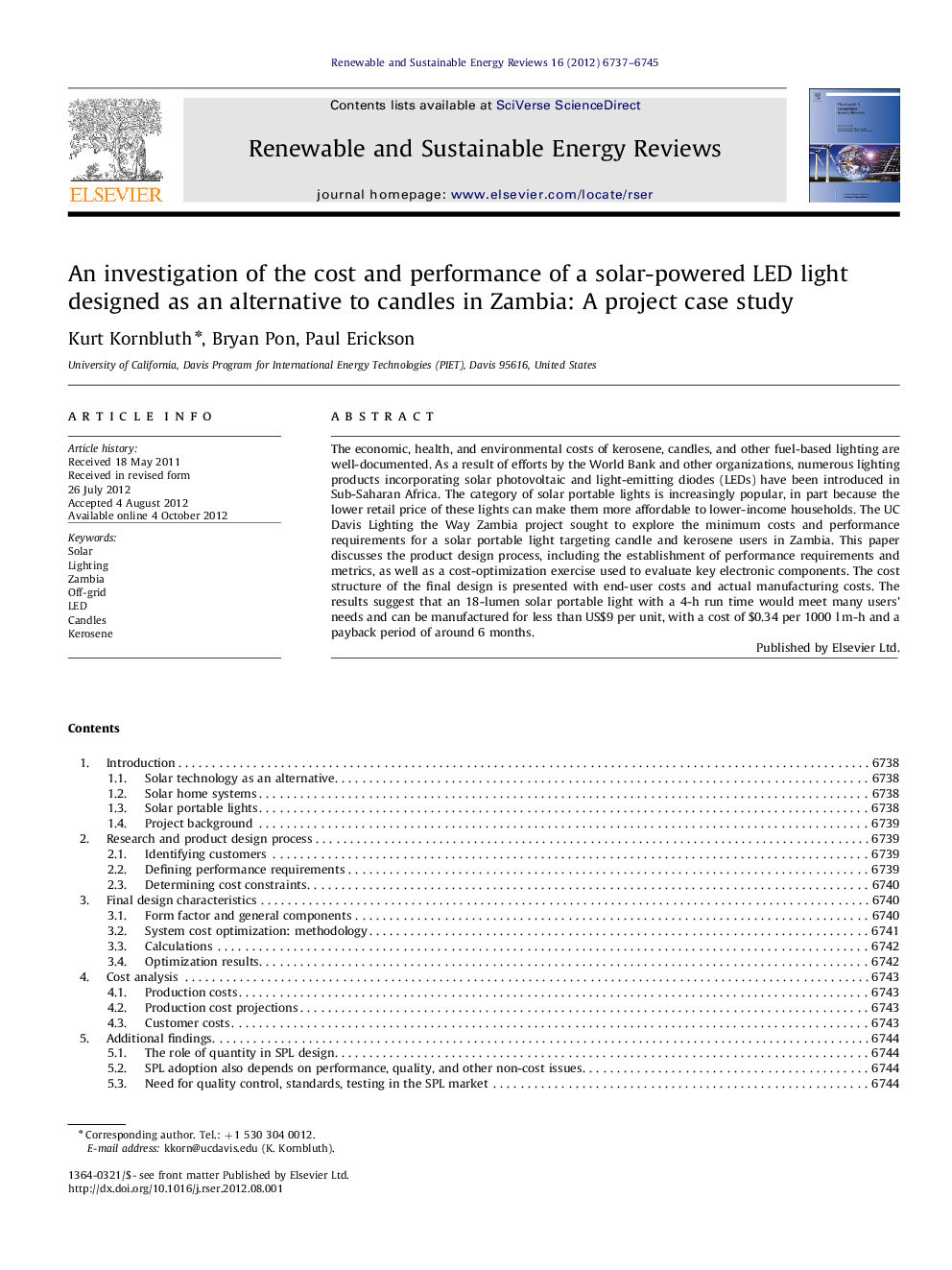| Article ID | Journal | Published Year | Pages | File Type |
|---|---|---|---|---|
| 1750757 | Renewable and Sustainable Energy Reviews | 2012 | 9 Pages |
The economic, health, and environmental costs of kerosene, candles, and other fuel-based lighting are well-documented. As a result of efforts by the World Bank and other organizations, numerous lighting products incorporating solar photovoltaic and light-emitting diodes (LEDs) have been introduced in Sub-Saharan Africa. The category of solar portable lights is increasingly popular, in part because the lower retail price of these lights can make them more affordable to lower-income households. The UC Davis Lighting the Way Zambia project sought to explore the minimum costs and performance requirements for a solar portable light targeting candle and kerosene users in Zambia. This paper discusses the product design process, including the establishment of performance requirements and metrics, as well as a cost-optimization exercise used to evaluate key electronic components. The cost structure of the final design is presented with end-user costs and actual manufacturing costs. The results suggest that an 18-lumen solar portable light with a 4-h run time would meet many users’ needs and can be manufactured for less than US$9 per unit, with a cost of $0.34 per 1000 l m-h and a payback period of around 6 months.
